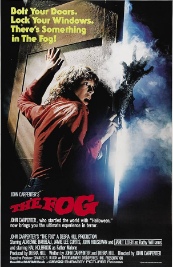
“That’s one of the most stressful movies I’ve ever seen!”
This quote comes from Mrs. Sharky, who perhaps unwisely left the selection of this evening’s entertainment to me.
She says that Alone is like death by a thousand cuts and accurately represents the kind of micro-aggression that women traveling by themselves encounter far too often.
Sometimes it’s just assholes, sometimes it’s Ted Bundy.
Jessica (Jules Willcox) decides to pack up her troubles in a U-Haul and head for greener pastures after her husband commits suicide—a similar premise to Alex Garland’s recent film Men.
Instead of rest and recuperation, her healing mission gets derailed by a menacing motorist (Mark Menchaca) who proves harder to get rid of than a mosquito in your tent.
As previously mentioned, sometimes extreme tragedy and trauma are considered action items in the universe we live in, as the landscape shifts from indifferent to malign and the real character development gets started.
Alone director Johm Hyams (Black Summer) and writer Mattias Olsson devise a brutal (and stressful!) battlefield in the rainy tall timber of the Pacific Northwest.
There is very little dialogue and our protagonist spends much of her screen time hiding in the bush from a diabolical serial killer who knows the area well. Jessica’s propensity to make noise (heavy breathing, mewling whimpers) during these anxious interludes drove my wife nuts.
“Shut up, already!” she shouted more than once. “It’s easy to hide in the woods! Just shut the hell up!”
Pursuit, capture, escape, more pursuit, and murder are the forces at work here, and the tension levels go “pop” on several occasions, such as when Jessica agonizingly overhears her stalker talking jovially with his wife and child on the phone, telling them he’ll be home in a few days.
Take a break if you need to, but stick with it. Alone delivers a satisfyingly savage finale that will make your blood pressure dance the meringue.
Who says cinema should be relaxing? Take up yoga, or something.


You must be logged in to post a comment.